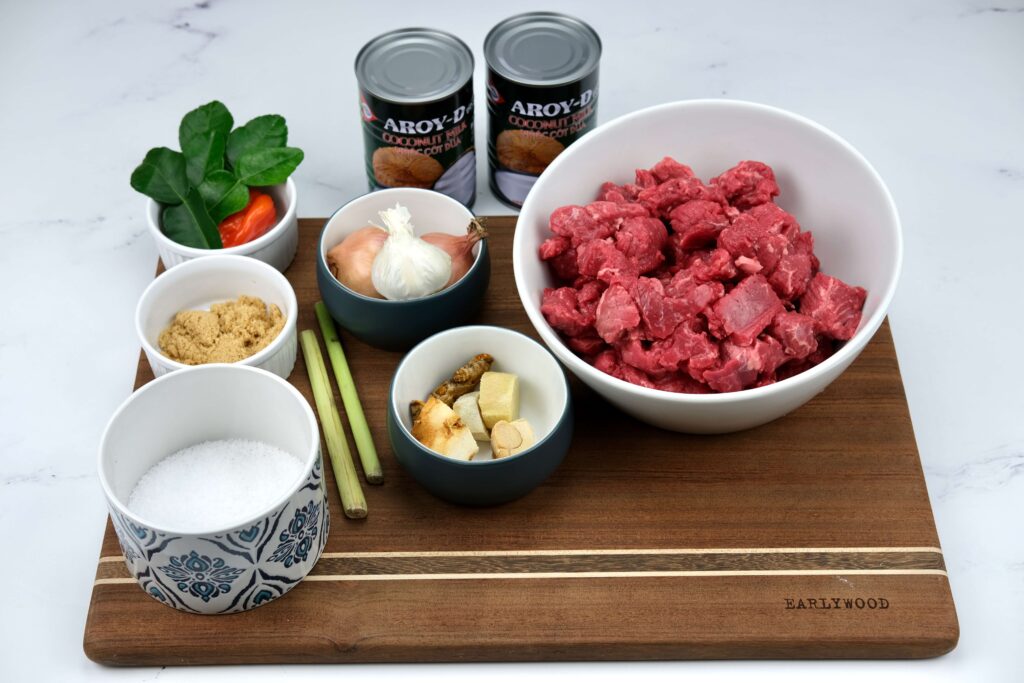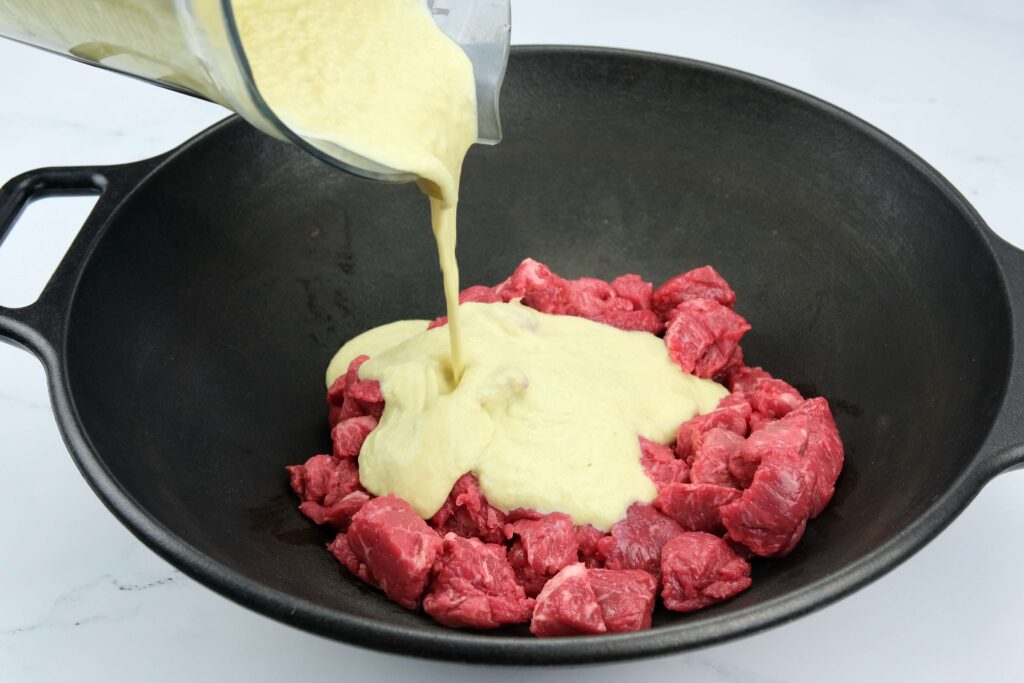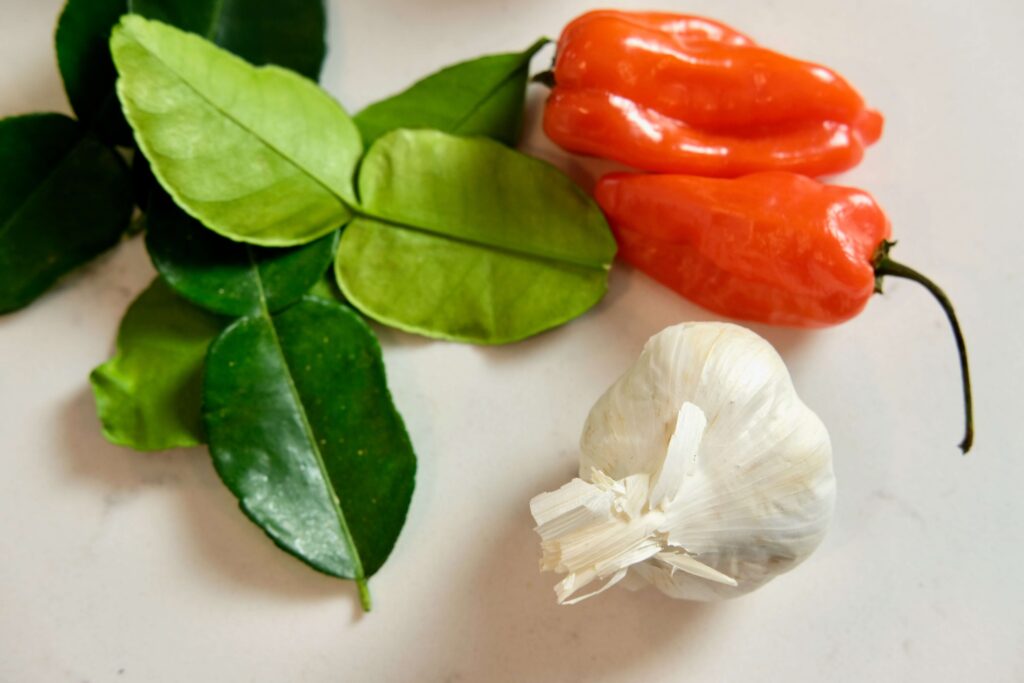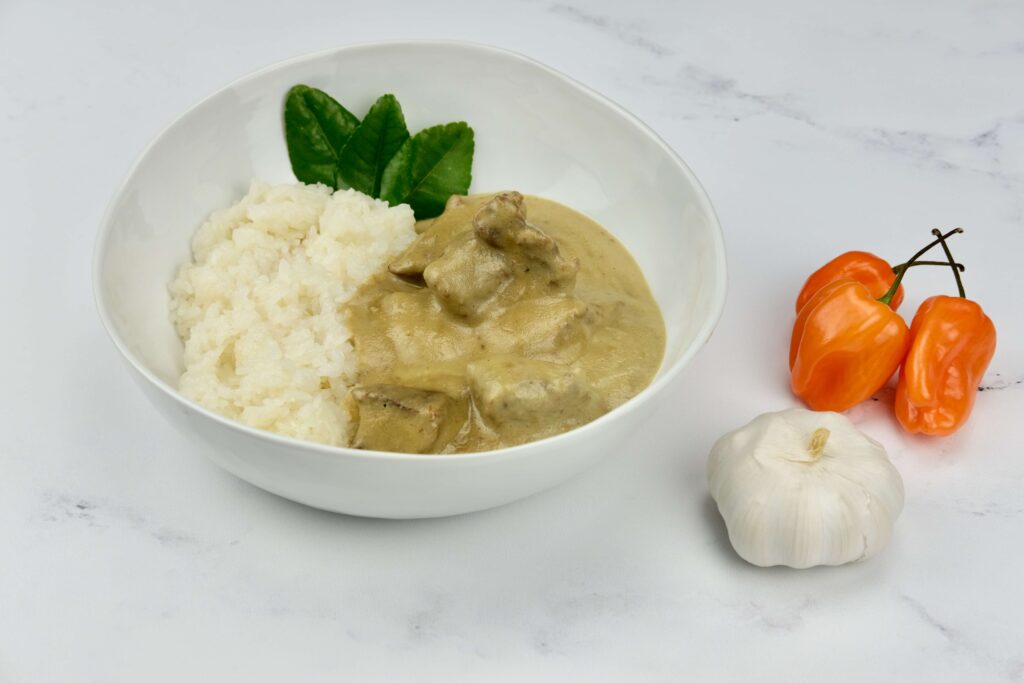Saucy Indonesian Beef Rendang: A Coconut-Rich Twist on a Classic
About this Recipe
By: Rachel
Indonesian beef rendang is one of those unforgettable dishes that lingers in your memory long after the last bite. Rich with coconut, spices, and slow-cooked tenderness, it’s a flavor-packed experience that tells a story with every spoonful.

A Memorable Indonesian Feast to Remember
Our dear friend, Tata, is a gifted cook. One evening, he and his husband hosted us for a multi-course dinner celebrating the foods of Indonesia, his home country. Although it was many years ago now, I remember every delicious bite, from the fresh, rich, smoky kohu kohu (salad of cured salmon and bean sprouts) to the pastel green cake delicately flavored with pandan leaf. But the standout for me was his unforgettable Indonesian beef rendang.
Falling in Love with Indonesian Beef Rendang
My favorite dish, though, was the rendang daging, a rich and complex Indonesian beef dish simmered in coconut milk and aromatics. It was served over a bed of dream-haunting, coconut-scented rice that I’ve tried countless times (and failed) to replicate. That is no matter how many times Tata has patiently explained the recipe to me.
The Origins of Beef Rendang: Flavor Meets Function
Tata’s Indonesian beef rendang is based on Sri Owen’s recipe from his brilliant book, The Indonesian Kitchen. The author explains that rendang originated in West Sumatra from the need to preserve meat in a hot climate without the benefit of refrigeration. The coconut milk acts as a preservative, in addition to giving the beef a rich and memorable flavor.
My Rendang-Style Twist: Saucy, Aromatic, and Deeply Satisfying
A traditional Indonesian beef rendang requires that you cook the meat until the coconut milk has reduced completely to oil, at which point the meat begins to fry. The meat absorbs the oil, resulting in a tasty dish, but not a saucy one. I wanted more of that unbelievable flavor; I wanted it to become a thick, decadent sauce that I could bathe in, I mean, spoon generously onto a bed of rice.
Why This Version of Indonesian Beef Rendang Works
This is my take on the traditional rendang—it is thick and saucy, more like a curry—but stays true to the original flavors of the dish. My version simmers lazily all day. You must resist the temptation to make it in your slow-cooker—it won’t work.
This Indonesian beef rendang must be cooked uncovered so that the sauce can reduce, thicken, and caramelize. Trust me – this isn’t a job for your slow cooker. The magic happens when the steam escapes, the sauce thickens, and the aroma fills your kitchen.
And if you’re looking for something light and fresh to serve alongside, this French Green Salad with Bûcheron Toasts makes a perfect, bright contrast to all that rich, slow-simmered goodness.
Indonesian-Inspired, Rendang-Style Coconut Beef
Ingredients
- 3 cans full-fat coconut milk
- 1 can coconut cream*
- 4 shallots, roughly chopped
- 4 cloves garlic, peeled and smashed
- 1 tablespoon (6g) peeled fresh ginger (about 1 inch), roughly chopped
- 1 tablespoon (6g) peeled fresh galangal (about 1 inch), roughly chopped
- 2 teaspoons fresh turmeric root (about ¼ inch), roughly chopped
- 1-2 habanero peppers (stems removed) or your favorite fresh, hot chiles
- 3 pounds (1 ⅓ kilos) beef brisket, cut into large chunks and trimmed of visible fat
- 1 ½ tablespoons (30g) kosher salt (or to taste)
- 3 tablespoons (40g) brown sugar (or to taste)
- 1 stem lemongrass
- 8 lime leaves
- *If you are unable to find coconut cream, you can buy two extra cans of coconut milk and use the solidified coconut cream that has collected at the top of the can, discarding the remaining coconut water.
Step by Step Instructions
Step 1
- To a high-powered blender, such as a Vitamix, add the coconut milk, shallots, garlic, ginger, galangal, turmeric, and habanero. Blend on the highest speed for 1-2 minutes, or until the mixture is completely smooth.
Step 2
- Add the beef to a large, heavy wok or wide, deep skillet. Cast iron or enameled cast iron is best (as the sauce reduces, it will burn more easily in stainless steel).Pour the contents of the blender over the beef. Add coconut cream, salt, and brown sugar, and stir to combine. Place on a burner over medium heat.

Step 3
- While you wait for the sauce to come to a simmer, prepare the lemongrass and lime leaves. On a large cutting board, remove the outer 1-2 thick outer layers of the lemongrass. Cut in half crosswise, and add to the sauce. Tear the lime leaves slightly at the edges to help release the oils, and add these to the sauce as well.

Step 4
- Adjust the heat to ensure that the sauce bubbles gently, uncovered, without sticking or burning at the bottom. Stir periodically.
- The dish will take 6-8 hours to cook, and is done when the sauce is thick and silky (like gravy), and the meat is tender, but not falling apart. If any grease has collected at the top of the pan, collect and discard.

Step 5
- Taste the sauce and adjust to your preferences. You may wish to add more salt or brown sugar. If you like a spicier sauce, you may slit open an additional pepper and let it simmer in the sauce during the cooking process, and discard it at the end.
- If you desire a more sour flavor, you may add fresh lime juice once you have removed the finished dish from the heat.
Step 6
- When you are happy with your sauce, remove and discard the lemongrass and lime leaves.
- Serve over white rice (or try your luck with coconut rice)!

Notes on ingredients: I have always had good luck finding these ingredients at my local Asian market. If you cannot find these less-common ingredients, they can be purchased dried on Amazon.
Galangal looks a lot like ginger root, but has a more floral, citrus-y taste. Turmeric has an earthy, pungent taste. I like to cut them into 1-inch chunks, and store them in my freezer.
Aromatic, delicate lime leaves add a unique flavor to the dish without the bright sourness of fresh limes.







